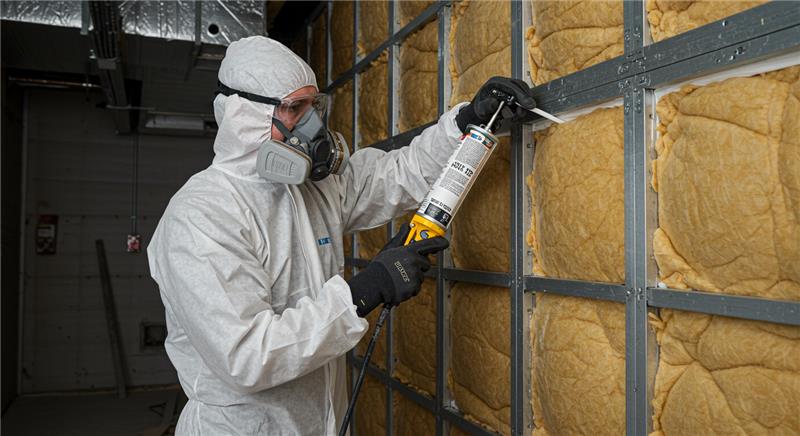
Proper air sealing during commercial spray foam installations directly affects energy efficiency, indoor air quality, and structural durability. In Marietta’s humid continental climate, uncontrolled airflow allows moisture infiltration, energy loss, and mold risks. Spray foam without tight air sealing often fails to meet performance expectations, even if applied correctly.
Air sealing prevents outside air from bypassing insulation and degrading building envelope performance. Without it, HVAC systems work harder, humidity increases, and indoor comfort drops. This article explains how proper sealing techniques protect Marietta’s commercial buildings and supports long-term cost control and compliance.
Ohio Valley Spray Foam applies tested field practices and region-specific sealing techniques that reflect experience in managing vapor barriers, thermal envelopes, and expansion joints for large-scale commercial structures.
| Factor | With Proper Air Sealing | Without Proper Air Sealing |
|---|---|---|
| Energy Efficiency | 30-50% less HVAC energy used | High energy waste from air leaks |
| Indoor Air Quality | Stable and filtered | Pollutants, allergens enter easily |
| Moisture Control | Reduced condensation | Moisture buildup, mold risk |
| Occupant Comfort | Balanced temperature zones | Drafts and hot/cold spots |
| Structural Longevity | Protected from vapor damage | Wood rot, rust, ceiling staining |
Spray foam serves dual roles: insulation and air barrier. For commercial buildings, closed-cell foam is more effective due to its high R-value and rigidity. Air sealing ensures that foam layers are continuous and unbroken by penetrations or structural irregularities.
Bonus Tip: Use a thermal imaging camera post-installation to verify seal integrity. It can detect thermal bridges invisible to the eye.
| Specification | Closed-Cell Spray Foam | Open-Cell Spray Foam |
|---|---|---|
| R-Value per Inch | 6.5 | 3.6 |
| Air Barrier at 1″ Thickness | Yes | No |
| Water Resistance | High | Low |
| Vapor Retarder | Yes | No |
| Structural Support | Adds rigidity | Minimal |
Marietta experiences wide seasonal temperature swings and high summer humidity. These conditions increase vapor pressure differences, leading to moisture infiltration through unsealed joints. Air sealing helps maintain dew point control and reduce interior humidity spikes.
Bonus Tip: Use closed-cell foam with integrated vapor control for exterior walls in buildings near the Ohio River, where groundwater humidity is elevated.

No. While spray foam resists air movement, proper detailing at seams, penetrations, and transitions is required to create a continuous seal.
Not in most commercial cases. Open-cell foam lacks vapor resistance and allows air leakage at lower thicknesses.
Yes. Retrofit sealing techniques target attics, mechanical penetrations, and accessible wall assemblies.
Ohio Valley Spray Foam brings tested field experience to every commercial spray foam project. For technical insight, material options, or compliance evaluations, contact the team directly.
Phone: (740) 629-9984 Email: [email protected]
Over 30 years with consistent performance if protected from UV and moisture exposure.
Blower door tests and thermal imaging are the standard methods for detecting air leaks.
Yes. Sealing gaps and using spray foam significantly lowers sound transfer through walls and ceilings.
Yes. IECC and ASHRAE codes require continuous air barriers in commercial construction.
Yes. Properly sealed buildings often require smaller, more efficient HVAC systems.